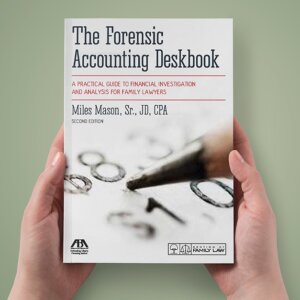A 21st Century Visit to the Alimony Bar
When drafted and adopted as law in the 1980 Divorce Code, Section 706 (now 3706) was disarmingly simple. It said,
706. Bar to alimony
No petitioner is entitled to receive an award of alimony where the petitioner, subsequent to the divorce pursuant to which alimony is being sought, has entered into cohabitation with a person of the opposite sex who is not a member of the family of the petitioner within the degrees of consanguinity.
The term “consanguinity” is defined at 23 Pa.S.C. 1304(e) in a paragraph that looks like it was written by a fifth grader. That statute, in concise adult language says you can’t marry your mom, dad, sis, bro, first cousin, aunt or uncle. And you can’t marry your kid. It just takes 90 words to say that. The goal here was simple. Yes, if you are divorced you can still take refuge with a family member but if you start drifting into the households of anyone else of the “opposite sex” your alimony can be terminated. “Cohabitation” is its own term of art. The leading cases on that nettlesome topic are Twilla 664 A.2d 1020 (Pa. Super. 1995) and Miller 508 A.2d 550 (Pa.Super, 1986).
Turning back to “opposite sex” question, the law has been slow to follow contemporary trends. In 2013 Pennsylvania had a dust-up over whether the Register of Wills could issue marriage licenses to people of the same sex. By 2015 the U.S. Supreme Court upheld other states similar practices in Obergefell v. Hodges, 576 U.S. 644 (2015). Meanwhile, 18 Pa.C.S. 5902-5903 continued to define “homosexual relations” as a crime until September 2022. If you pause to think about it, from 2015 until 2022, you actually could get a license in Pennsylvania to commit a crime.
Meanwhile, the world of sexual activity has gotten complicated to say the least. We could probably devote more than 90 words to the newly defined terms of sexual orientation and corresponding activity or inactivity associated with it. Blessedly, we still have the caselaw attempting to clarify what is cohabitation. But lawyers who have tried these cases will tell you that they tend to be long on testimony and short on “standards.” A fellow blogger wrote that among the things to be evaluated are who walks whose dog and who takes out the trash. Not unfair evidence…just tedious to listen to.
This leads this writer to wonder whether Section 3706 still makes sense. We already have 17 enumerated factors to evaluate in Section 3701(b). Those include the ability of the recipient to support him/herself and relative incomes and needs. Is the recipient of alimony less entitled to that benefit if she lives with a non-binary roommate in a one bedroom apartment than if she moves into her uncle’s $6 million brownstone on the Upper East side of Manhattan? If the recipient professes to be celibate or in gender transition, is that somehow a factor? And, how?
Section 3701 alimony is modifiable unless governed by a settlement agreement (which controls modifiability). Its got just about every factor in the world for judges to evaluate. Perhaps it is time to give Section 3706 a rest and let that statutory number be deployed for more useful purposes. In other words, let the courts chew through how “cohabitation” should impact the alimony award given all the factors rather than use it as an absolute bar.






